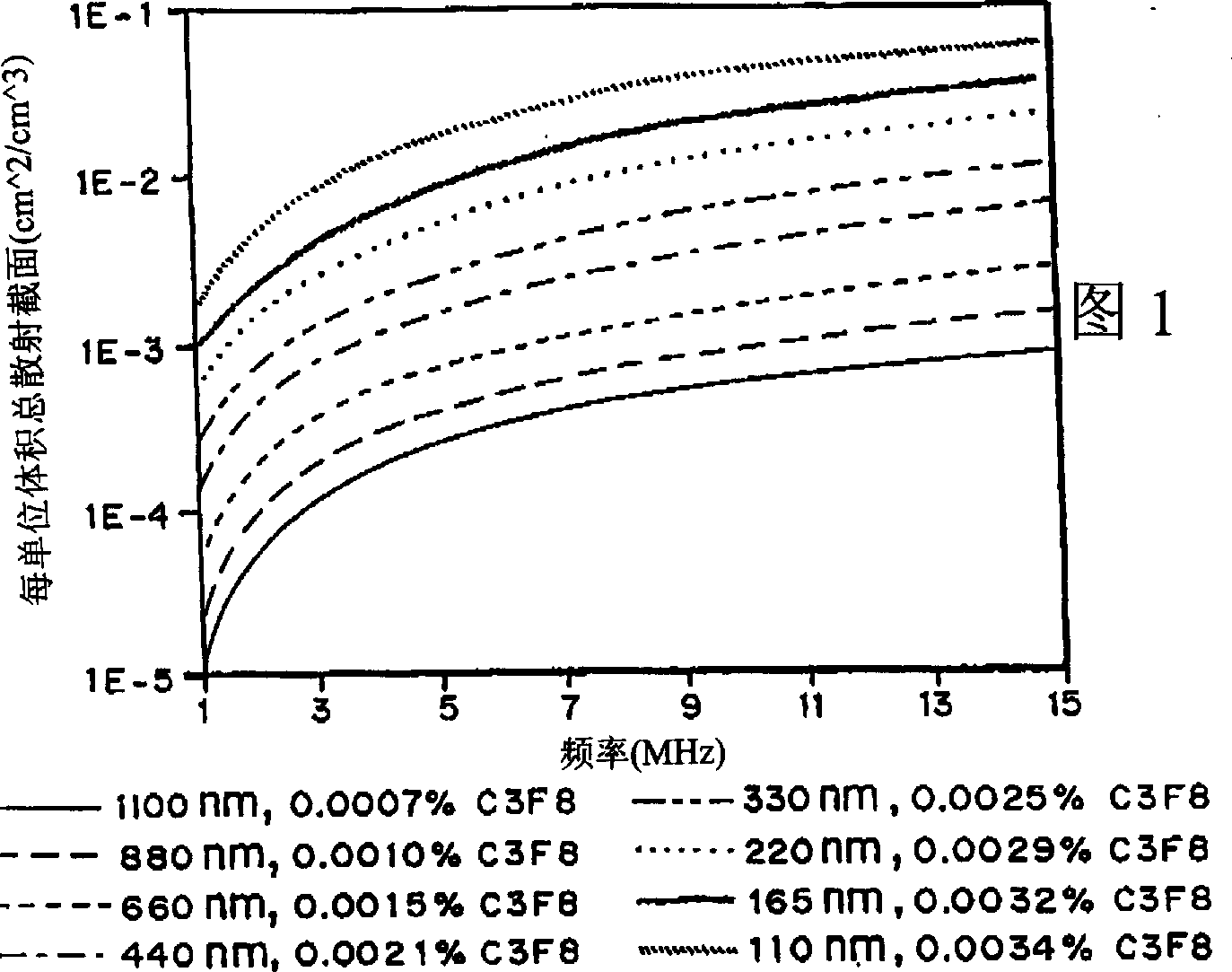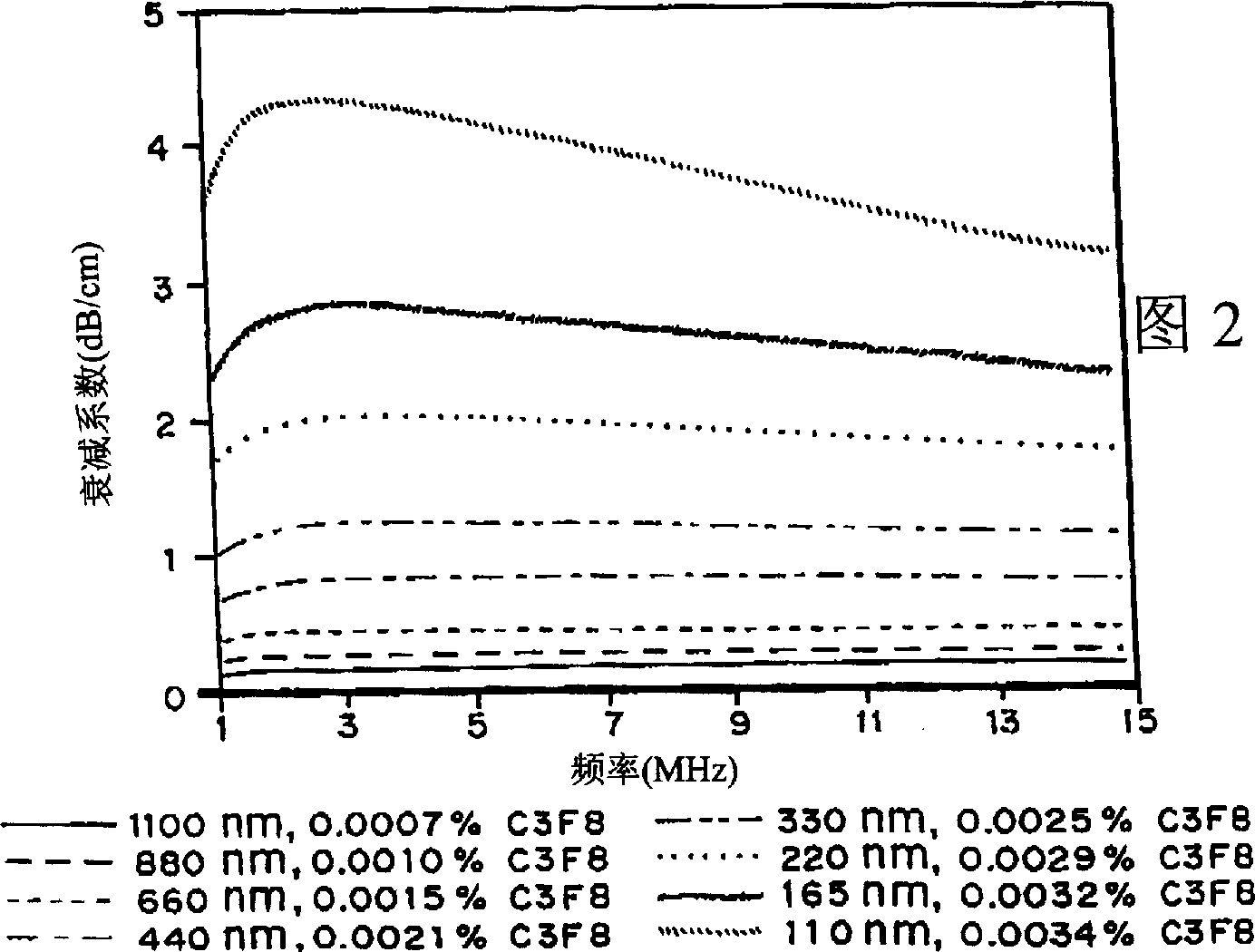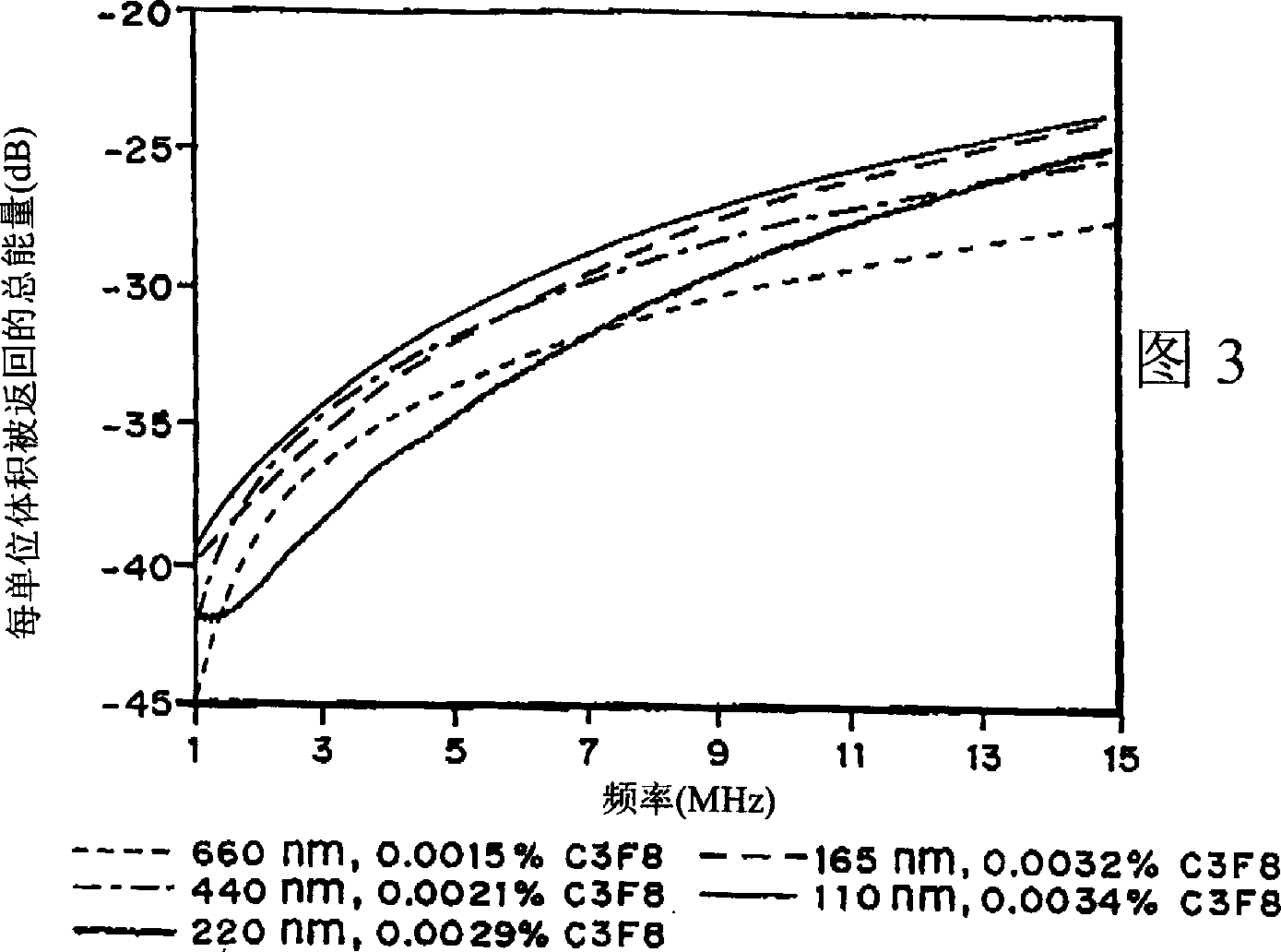Method for enhancing echogenicity and decreasing attenuation of microencapsulated gases
A gas and particle technology, applied in the direction of echo/ultrasound imaging agents, preparations for in vivo tests, pharmaceutical formulations, etc., can solve the problems of non-standard harmonic imaging and lack of efforts to correct the sonic properties of ultrasound contrast agents
- Summary
- Abstract
- Description
- Claims
- Application Information
AI Technical Summary
Problems solved by technology
Method used
Image
Examples
Embodiment 1
[0083] 3.2g PEG-PLGA (75:25) (IV=0.75dL / g), 6.4g PLGA (50:50) (IV=0.4dL / g) and 384mg diarachidonic acid phosphatidylcholine were dissolved in 480ml di in methyl chloride. Add 20 ml of 0.18 g / ml ammonium bicarbonate solution to the polymer solution and homogenize the polymer / salt mixture using a Virtis homogenizer at 10,000 RPM for 2 minutes. The solution was suctioned and spray dried with a BucchiLab spray dryer at a flow rate of 20ml / min, the inlet temperature was 40°C, and the outlet temperature was 20-22°C. Measured with a Coulter particle size analyzer, the particle diameter ranges from 1 to 10 microns, with an average of 2.0 microns. Scanning electron microscopy showed that the particles were generally spherical with a smooth surface and occasional surface shrinkage. Made into microspheres for transmission electron microscopy by embedding in LR white resin and then polymerizing under UV light. Thin sections were cut on a LKB ultramicrotome using a glass knife and obser...
PUM
 Login to View More
Login to View More Abstract
Description
Claims
Application Information
 Login to View More
Login to View More - R&D
- Intellectual Property
- Life Sciences
- Materials
- Tech Scout
- Unparalleled Data Quality
- Higher Quality Content
- 60% Fewer Hallucinations
Browse by: Latest US Patents, China's latest patents, Technical Efficacy Thesaurus, Application Domain, Technology Topic, Popular Technical Reports.
© 2025 PatSnap. All rights reserved.Legal|Privacy policy|Modern Slavery Act Transparency Statement|Sitemap|About US| Contact US: help@patsnap.com



